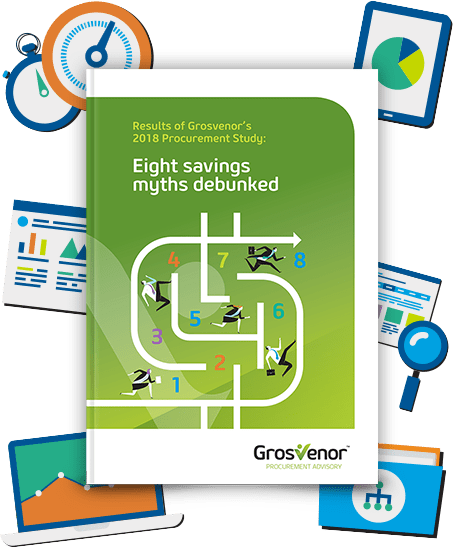Pay Less, Buy Cheaper, Buy Less and Buy Smarter: The 4 Spend Levers

When we think of generating savings, many of us automatically think of simply paying less for goods and services: whether we’re talking about tenders, volume aggregation or minimising contract leakage, this tried and tested method of using spending power to beat down prices has delivered significant savings over the years.
But more and more, this ‘Pay Less’ strategy is delivering diminishing returns. Our 2015 CPO study survey showed that organisations that only use Pay Less tactics could be missing out on anything up to a 122% increase in savings.
So where will the next wave of procurement savings come from?
Now is probably a good time to introduce the 3 advanced spend levers: “Buy Cheaper”, “Buy Less” and “Buy Smarter”.
1. Buy Cheaper
By “Buy Cheaper” we’re talking about managing buyer behaviour to avoid premium goods and services.
This means that Eric in HR just gets the standard HP notebook, rather than its high-spec cousin with the super-fast processor and fancy graphics card. Or that the MD flies cattle-class to that symposium in LA, rather than quaffing Moët in business class. (Well, ok at the very least we’ll buy restricted airfares instead of fully flexible fares!)
While “Buy Cheaper” may lose you some friends in the organisation, it can deliver high savings, especially if you choose the right tactic. For instance, respondents to our survey reported up to 113% additional savings just from reducing expenditure on nice-to-have features, add-ons and bespoke items alone.
2. Buy Less
“Buy Less” means reducing the actual consumption of goods and services.
In practice, this could mean persuading the design department to print double-sided and reduce paper consumption (good luck with that!), or encouraging the sales team to use video conferencing to reduce travel costs.
These seemingly inconsequential changes can have a huge impact on the overall costs of running an organisation. Our survey highlighted that some sectors could stand to make an additional 148% of savings, just by implementing Buy Less tactics alone.
3. Buy Smarter
“Buy Smarter” refers to finding new solutions and efficiencies in the way goods and services are purchased and consumed. Our survey showed that buying smarter can increase an organisation’s procurement savings by up to 44%.
Quite often this means rethinking how we perceive cost and shifting away from per unit cost to process cost. For instance, it might seem smart to buy printed items like business cards in bulk but what happens when titles change and all the cards are suddenly out of date? It’s better to buy them in smaller batches – and at a higher unit cost – and avoid throwing out a large number of cards when the inevitable change in name or title occurs.
Buying Smarter also means finding smarter ways to manage internal purchasing and leverage supplier relationships. For example, is it really necessary that each purchase order leads to a separate invoice or would a compiled monthly invoice do just as well?
Our study further found that the advantages of Buy Smarter go deeper than dollar savings alone. While they also free up internal resources, they often lead to other benefits, including improvements to quality, reduction of timeframes and reduction of supply risks.
Get ahead of the game
Amazingly, despite the incredible savings to be gained from advanced spend levers, our survey showed a significantly lower uptake among participants as compared to Pay Less, with the majority of organisations not currently leveraging Buy Less or Buy Smarter at all.









 We are all about sharing our expertise to help you and your organisation be the best it can be.
We are all about sharing our expertise to help you and your organisation be the best it can be.